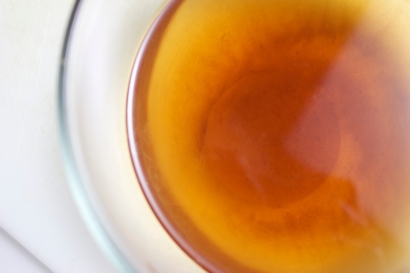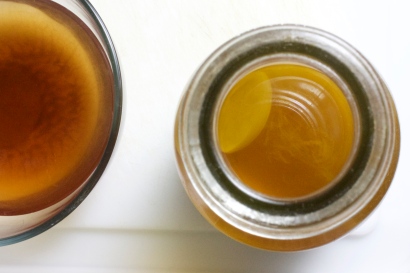Yesterday I started a little batch of red wine vinegar. Why? Well, on Saturday I purchased an exceptional book, a fascinating book, a New York Times Bestseller, a James Beard Foundation Book Award Winner, and an IACP Cookbook Awards Finalist. I’ve got a sneaking suspicion that this book is going to become one of my favorites! Not because of all the awards; that doesn’t particularly matter. I just love books that call me to exploration and activity. Books that inspire me to live differently than I did before reading them. Books that help me see life through different eyes. This book, so far, is meeting all of those criteria. It’s called The Art of Fermentation, and it was written by Sandor Ellix Katz. It’s a large hardcover book all about using beneficial bacteria as a way to preserve food without the need for refrigeration. This method is also a way to make food more nutritious and probiotic-rich and to create an exceptional array of otherwise unobtainable flavors.
Using bacteria to preserve food sounds a little questionable to modern ears when we first hear about fermenting, but this is the way people successfully preserved food for ages and ages, and there’s a lot we can learn from the actions of our ancestors. We don’t exactly have everything all figured out! Actually, we still use fermentation a lot today; some common examples are cheese, sourdough bread, vinegar, yogurt, wine, and beer. Most food manufacturers kill off all the good bacteria after they’ve done their job, but if you make the food at home, the live bacteria offer all kinds of health benefits and unique flavor variations! I’ve made sauerkraut and milk kefir for years (so delicious!). I’ve even dabbled (very briefly—I was awful!) in sourdough bread-making, so this concept isn’t an entirely new one for me, but this book is opening my eyes to the sheer range of possibilities. I’m beginning to think you can ferment virtually anything! I can’t wait for the garden to start producing next year! I do love to experiment in the kitchen…

I put this jar of raw apple cider vinegar in a cabinet and left it there for years. It formed so many SCOBYs that they almost fill the bottle. The SCOBYs can be separated and used to start new batches of vinegar.
So, back to the vinegar experiment… I’m making a tiny batch. I’m just trying to see if it works. My parents made red wine last year from my Grandpa’s bumper crop of Concord grapes, and I still had a third of a bottle left, so I emptied the wine into a small glass bowl. Then, I added a vinegar SCOBY or mother-of-vinegar (that’s the bacterial culture used to change sugars or alcohol to vinegar; the SCOBY was one of MANY floating in a bottle of raw vinegar I put in the cabinet and forgot about! (see picture above)). After adding the SCOBY, I covered the bowl with a cloth and let it sit. Hopefully those good bacteria will get to work and transform the alcohol to acetic acid. I plan to taste the concoction every once in a while over the next few weeks (I hear it takes about 2 to 4 weeks to convert to vinegar) and when the taste is to my liking, I’ll bottle it up, throw it into the fridge and toss it with extra virgin olive oil for a simple salad dressing with a nice tangy kick… yum!

A bowlful of homemade red wine with an added SCOBY or mother-of-vinegar (the round disk sitting on the bottom of the bowl). I retrieved the SCOBY from a bottle of raw apple cider vinegar in my cabinet.
Have any of you made your own vinegar? How did it work? Any suggestions for a newbie like myself? I’ll try to update this post in a few weeks with the end result!
———–
UPDATE (11/16/14): It’s been two weeks, and the vinegar (yes, I think I can safely call it that!) seems to be doing well. A nice SCOBY developed on the top of the liquid and the taste is tangy and vinegary. I think it’s just about ready for bottling! Yay! Success! This is so easy, friends. Why not give it a try?



One thought on “Handmade Monday: Red Wine Vinegar”